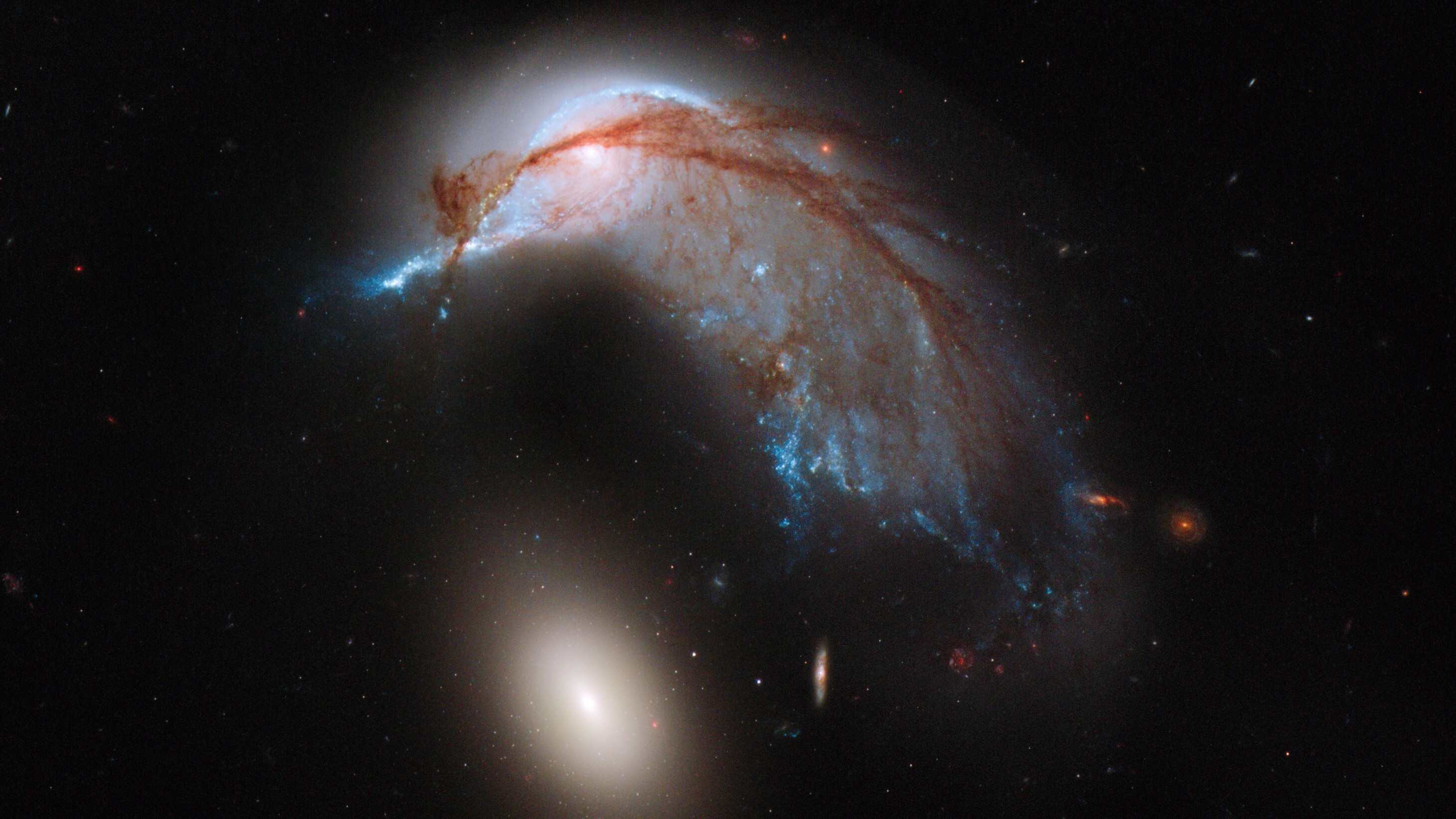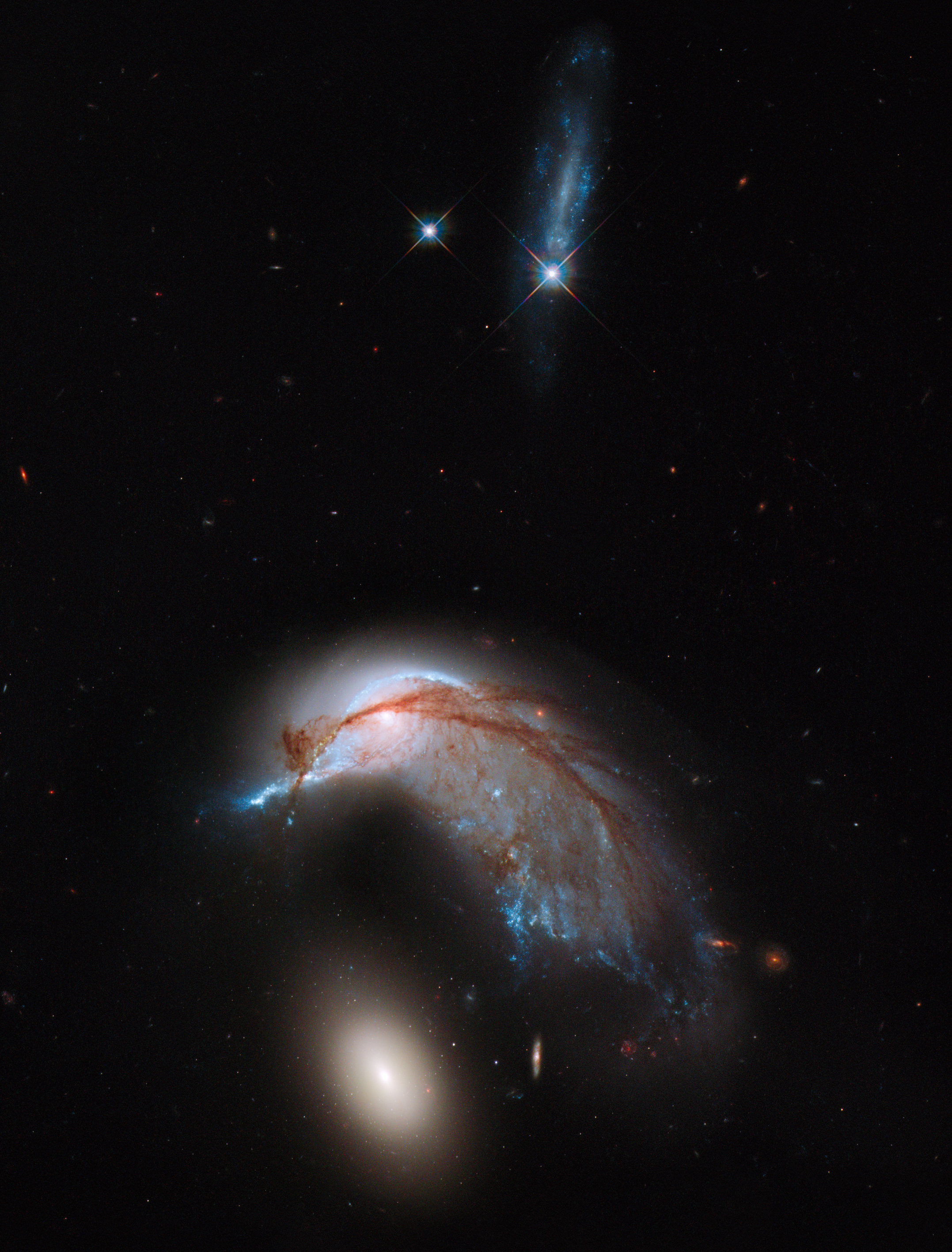Space photo of the week: Warped 'hummingbird galaxy' guards a cosmic egg
Hubble's image of two colliding galaxies, known as Arp 142, show how a small galaxy's gravity has shredded a once-large spiral into a birdlike figure.

What it is: Arp 142, a pair of interacting galaxies
When it was taken: June 20, 2013
Where it is: 326 million light-years from Earth, in the constellation Hydra.
Why it's so special: Showcased recently by the European Space Agency, this stunning image of a couple of interacting galaxies creates the illusion of a birdlike figure guarding an egg.
Is it a hummingbird, a penguin, or a sneaky porpoise creeping up onto the beach? Arp 142 is a fabulous example of pareidolia, the human tendency to see familiar objects or patterns in unrelated objects. However, its two galaxies are very much related in that they're gravitationally interacting with each other.
Related: 15 Martian objects that aren’t what they seem
This image shows a standard spiral galaxy called NGC 2936 and a small elliptical galaxy called NGC 2937. When two galaxies get too close to each other, their gravity begins to warp each other. Sometimes, the galaxies merge, but other times, they rip each other apart.
Get the world’s most fascinating discoveries delivered straight to your inbox.
If you study the twisted remains of the larger spiral galaxy, you can see the leftovers of its bright core as the "eye'" of the bird — but its once-spiraling arms of stars are now warped streaks of blue and red in the bird's body.
Although the image was created in 2013, it's resurfaced recently as scientists use the Hubble Space Telescope to finish cataloging so-called peculiar galaxies. In September, Hubble added Arp 107 as the space telescope used its Advanced Camera for Surveys to observe members of the Atlas of Peculiar Galaxies, all of which are interacting and merging. That catalog was initially published in 1966 by American astronomer Halton Arp (this peculiar galaxy’s namesake).
The image of Arp 142 — a combination of visible and infrared light — was taken by Hubble's Wide Field Camera 3, which was installed in 2009 by astronauts on Space Shuttle Atlantis, according to NASA. It was the final servicing mission, and the space telescope hasn't been visited since.

Jamie Carter is a freelance journalist and regular Live Science contributor based in Cardiff, U.K. He is the author of A Stargazing Program For Beginners and lectures on astronomy and the natural world. Jamie regularly writes for Space.com, TechRadar.com, Forbes Science, BBC Wildlife magazine and Scientific American, and many others. He edits WhenIsTheNextEclipse.com.



